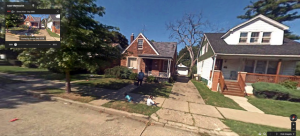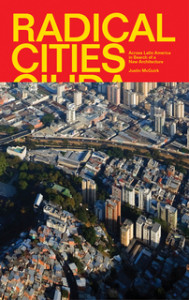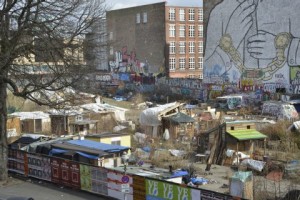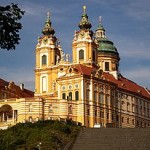Berliner Kurier – Das ist nicht Bombay, das ist Berlin!
KREUZBERG. Juni 2014. Zwischen Müll und Dreck, zwischen Spree und Schlesischer Straße: Hinter zuplakatierten Bauzäunen wächst ein wahrer Slum, in dem Lebensbedingungen wie in Armenvierteln von Bombay herrschen. Oder in Favelas brasilianischer Mega-Städte. Es sind etwa 30 Bretterbuden, Wellblechhütten und Zelte – zusammengeschustert zu einer kleinen Stadt. Mitten in Berlin. In Deutschland.
See more: http://mobil.berliner-kurier.de/die-slums-von-kreuzberg
Geneva Global & the Legatum Foundation – Transforming Slums
June 2014. An initiative led by Geneva Global and the Legatum Foundation to explore and expand thinking and perspectives about the phenomenon of slums and urbanization around the world and to propose tangible innovative, game-changing interventions for transformation.
Why Focus on Slums?
There are over one billion people currently living in slums, which is about one-third of the urban population in developing countries. This number will likely double by 2030, making the topic of slum transformation an urgent priority.
In response, the Legatum Foundation, and its philanthropic advisor, Geneva Global, are developing a program to tackle the issue. As a first step, we are working to convene a range of thought leaders to examine the topic from both from a philosophical standpoint (Why do slums exist? Should we be helping?) as well as practical standpoint (What can be done to improve conditions? What’s the best way to address the root causes?).
Held on 25-26 June in Dubai, the intent of the event is to understand the slum sector in greater detail and identify gaps and opportunities.
Dan Hancox – Spain’s Empty Housing Project Valdeluz
newsweek.com. June 2014. The first thing you notice in Valdeluz, Spain is the wind. It meets no resistance as it blows hard and loud across empty lots where apartment blocks were meant to stand. Roads that appear on Google Maps go nowhere and have no names. Some 40 miles from Madrid, Valdeluz was conceived at the height of what is sometimes called Spain’s economic miracle. In a Catholic nation, whose faith has declined substantially during its three decades of democracy, there is an increasing reluctance to believe in miracles of any kind.
Spain’s economic crisis now feels so deep, lasting and all-pervasive, it’s hard for many to recall how different the atmosphere was during the economic boom. A huge influx of immigrant labor, tourists and expatriate house buyers after Spain joined the European Union in 1986, and the launch of the euro, in 1999, helped the economy to soar. After decades of backwardness, Spain opened its cultural riches to the world, and the world came to visit: It is second only to the United States in revenue from international tourism.
Read more: http://www.newsweek.com/nobody-gets-out-here-alive
Watch Detroit’s Rapid Collapse In These Side-By-Side Street-View Images
 June 2014. Earlier this year, hundreds of workers drove down Detroit streets block by block, mapping out every abandoned home, decaying factory, and trash-filled vacant lot. They counted nearly 85,000 blighted parcels; just tearing the buildings down will cost $2 billion.
June 2014. Earlier this year, hundreds of workers drove down Detroit streets block by block, mapping out every abandoned home, decaying factory, and trash-filled vacant lot. They counted nearly 85,000 blighted parcels; just tearing the buildings down will cost $2 billion.
Thanks to an unending public appetite for ruin porn, these numbers aren’t necessarily surprising. The modern image of Detroit is of a city that’s falling apart. But it’s easy to forget how quickly things have changed. One Detroiter decided to turn to Google Street View and Bing Maps to show how blocks keep evolving in the GooBing Detroit Tumblr, with side-by-side views of the same street in different years.
Read & see more: http://www.fastcoexist.com/3031637/watch-detroits-rapid-collapse-in-these-side-by-side-street-view-images#22
Alex Park – Has This Chilean Architect Figured Out How To Fix Slums?
 m.motherjones.com. June 2014. In the United States, we tend to think of the suburbs as the historic domain of the middle class. It’s where the boomers went after fleeing the cities to accommodate their growing families (although the demographics of the suburbs are now changing).
m.motherjones.com. June 2014. In the United States, we tend to think of the suburbs as the historic domain of the middle class. It’s where the boomers went after fleeing the cities to accommodate their growing families (although the demographics of the suburbs are now changing).
But in Latin America, urban peripheries are less commonly populated by leafy suburbs for the rich than by slums for the poor. These shantytowns typically lack basic infrastructure like paved roads, sewers, and tap water. Living far from the city, residents are often forced to make long and expensive commutes.
But in the medium-sized Chilean port city of Iquique, one architect, Alejandro Aravena, had a solution: partial houses, located at the center of town, equipped with only the barest necessities—and space for residents to build on, bit by bit, as they can afford it.
When they were first built fourteen years ago for about 100 families, Aravena’s flagship projects, called the Quinta Monroy Houses, came with all the core necessities—a roof, a bathroom, a kitchen. With a little more than 300 square feet in floor space to start with, the houses were 25 percent smaller than the average public housing unit in Chile, but with an extra-wide foundation, residents had plenty of room to expand.
In his new book, Radical Cities: Across Latin America in Search of a New Architecture, journalist Justin McGuirk writes that when Aravena first launched the project through his firm, Elemental, a number of critics were appalled. They argued that the government should provide complete houses, since incomplete houses require the occupant to perform manual labor. But where some saw a failure in the making, others welcomed change. In the 1970’s, under Chile’s socialist president Salvador Allende, the government prioritized building completed public housing, even enlisting a Soviet-made pre-fabricated house factory for the job. But despite the initial gusto, the government quickly ran out of the resources to continue. In three years, the slum population rose more than 130 percent.
Since the Allende period, the government has shifted to a hybrid market-government approach, giving subsidies to the poor to buy houses and land. At the time Aravena built Quinta Monroy, the government offered $7,500 per family—usually too little to buy a complete house, but just enough to make Aravena’s stripped-down models affordable.
Read more: http://m.motherjones.com/want-reduce-sprawl-build-half-house
Americans At Work Series ~ Bookbinders (ca.1961)
Shows the work of bookbinders and the final steps in the process of manufacturing printed books. From the “Americans at Work” series.



